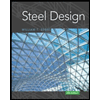Q2. Statically determinate or indeterminate truss analysis by the stiffness method a) For the truss shown in Fig 2, determine the stiffness matrices of elements 2, 3 and 4 in the in the global co-ordinate system. Assume for each member A = 0.0015 m² and E = 200 GPa. Indicate the degrees-of freedom in all the stiffness matrices. b) Determine the stiffness matrix of the whole truss in the global co-ordinate system. Clearly indicate the degrees-of freedom numbers in the stiffness matrix. c) Calculate all the nodal displacements and all the member forces of the truss. d) Repeat the problem using the Strand7 finite element software package. Show the truss model with loadings and boundary conditions. Display the deflected shape of the truss. Submit a hard copy from Strand7 showing the nodal displacements and member forces (highlight these in the hard copy). e) Present a table showing the comparisons of member forces from the stiffness method (manual calculations) and Strand7 analysis. Compare the maximum vertical deflection of the truss based on the stiffness method and Strand7 analysis. Comment on the comparisons of the values between the two. 2 m 2 Fig 2. Truss for Q2 D 2 kN
Q2. Statically determinate or indeterminate truss analysis by the stiffness method a) For the truss shown in Fig 2, determine the stiffness matrices of elements 2, 3 and 4 in the in the global co-ordinate system. Assume for each member A = 0.0015 m² and E = 200 GPa. Indicate the degrees-of freedom in all the stiffness matrices. b) Determine the stiffness matrix of the whole truss in the global co-ordinate system. Clearly indicate the degrees-of freedom numbers in the stiffness matrix. c) Calculate all the nodal displacements and all the member forces of the truss. d) Repeat the problem using the Strand7 finite element software package. Show the truss model with loadings and boundary conditions. Display the deflected shape of the truss. Submit a hard copy from Strand7 showing the nodal displacements and member forces (highlight these in the hard copy). e) Present a table showing the comparisons of member forces from the stiffness method (manual calculations) and Strand7 analysis. Compare the maximum vertical deflection of the truss based on the stiffness method and Strand7 analysis. Comment on the comparisons of the values between the two. 2 m 2 Fig 2. Truss for Q2 D 2 kN
Chapter5: Beams And Frames: Shear And Bending Moment
Section: Chapter Questions
Problem 53P: For the beam shown: (a) determine the distance a for which the maximum positive and negative bending...
Related questions
Question
Can you please break down all the hand calcs and make sure we answer the below.
| a | Determine the global stiffness matrices (k’) of all truss members including correct degrees-of freedom (dof)-3x3 | ||||
| b | Determine the global stiffness matrix (K) of the whole truss (include dof numbers) | ||||
| c | i) Calculate |
||||
| ii) Show partition and solve KD=Q | |||||
| iii) Calculate all the member forces | |||||
| d | i) Solve the problem using Strand7 (model) (You must model the beam property as truss) | ||||
| ii) Display of deflected shape, nodal displacements and member forces (3+3+3) | |||||
| e | Comparison of member forces and comments , comparison of displacemnts and commnets |

Transcribed Image Text:Q2. Statically determinate or indeterminate truss analysis by the stiffness method
a) For the truss shown in Fig 2, determine the stiffness matrices of elements 2, 3 and 4
in the in the global co-ordinate system. Assume for each member A = 0.0015 m²
and E = 200 GPa. Indicate the degrees-of freedom in all the stiffness matrices.
b) Determine the stiffness matrix of the whole truss in the global co-ordinate system.
Clearly indicate the degrees-of freedom numbers in the stiffness matrix.
c) Calculate all the nodal displacements and all the member forces of the truss.
d) Repeat the problem using the Strand7 finite element software package. Show the
truss model with loadings and boundary conditions. Display the deflected shape of
the truss. Submit a hard copy from Strand7 showing the nodal displacements and
member forces (highlight these in the hard copy).
e) Present a table showing the comparisons of member forces from the stiffness
method (manual calculations) and Strand7 analysis. Compare the maximum vertical
deflection of the truss based on the stiffness method and Strand7 analysis.
Comment on the comparisons of the values between the two.
2 m
2
Fig 2. Truss for Q2
D
2 kN
Expert Solution
This question has been solved!
Explore an expertly crafted, step-by-step solution for a thorough understanding of key concepts.
Step by step
Solved in 2 steps with 4 images

Recommended textbooks for you


Principles of Foundation Engineering (MindTap Cou…
Civil Engineering
ISBN:
9781337705028
Author:
Braja M. Das, Nagaratnam Sivakugan
Publisher:
Cengage Learning

Principles of Foundation Engineering (MindTap Cou…
Civil Engineering
ISBN:
9781305081550
Author:
Braja M. Das
Publisher:
Cengage Learning


Principles of Foundation Engineering (MindTap Cou…
Civil Engineering
ISBN:
9781337705028
Author:
Braja M. Das, Nagaratnam Sivakugan
Publisher:
Cengage Learning

Principles of Foundation Engineering (MindTap Cou…
Civil Engineering
ISBN:
9781305081550
Author:
Braja M. Das
Publisher:
Cengage Learning

Steel Design (Activate Learning with these NEW ti…
Civil Engineering
ISBN:
9781337094740
Author:
Segui, William T.
Publisher:
Cengage Learning

Engineering Fundamentals: An Introduction to Engi…
Civil Engineering
ISBN:
9781305084766
Author:
Saeed Moaveni
Publisher:
Cengage Learning

Principles of Geotechnical Engineering (MindTap C…
Civil Engineering
ISBN:
9781305970939
Author:
Braja M. Das, Khaled Sobhan
Publisher:
Cengage Learning